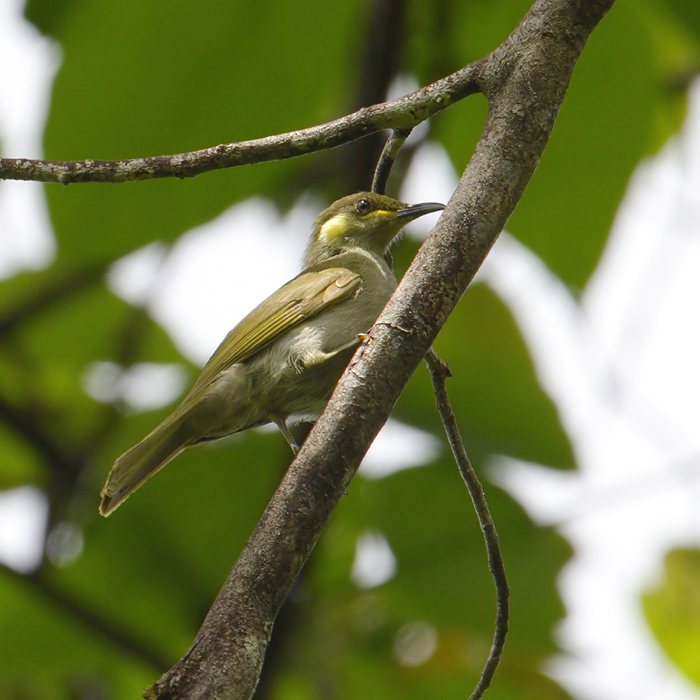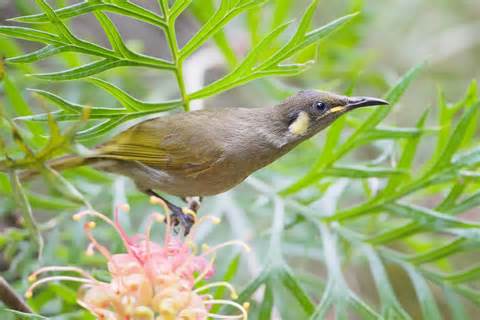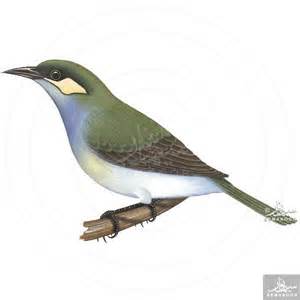
Meliphaga aruensis
TAXONOMY
Meliphaga auriculata Salvadori, 1881, Utanata River, New
Guinea.
OTHER COMMON NAMES
English: Puff-backed honeyeater; French: Mйliphage bouffant;
German: Aruhonigfresser; Spanish: Melнfago de Lomo Inflado.
PHYSICAL CHARACTERISTICS
6.7 in (17 cm); 1.1 oz (30 g). Olive-green upperparts with narrow
yellowish rictal spot on sides of head; blackish lores; and
gray underparts washed yellow, darker on flanks. Feet dull
gray, bill blackish brown.
DISTRIBUTION
New Guinea from sea level to 4,000 ft (1,200 m), Aru, Yapen,
West Papuan, D’Entrecasteaux, and Trobriand Islands.
HABITAT
Lowland rainforest, especially in dense regrowth after disturbance
in both secondary and primary forest.
BEHAVIOR
Shy, usually hidden and very hard to identify from several similar
meliphagas with which they may occur. Voice is a rapid series
of mellow staccato notes.
FEEDING ECOLOGY AND DIET
Take fruit, nectar, and insects by gleaning in the understory
and lower canopy.
REPRODUCTIVE BIOLOGY
Breeding recorded March through April and August through
December. The cup-shaped nest of dead leaves and bark is suspended
in shrub or sapling. Female incubates one or two eggs,
and both adults feed young.
CONSERVATION STATUS
Not threatened.
SIGNIFICANCE TO HUMANS
None known.
Other popular Animals
Photo Gallery of - Puff-backed meliphaga




 Animalia Life
Animalia Life